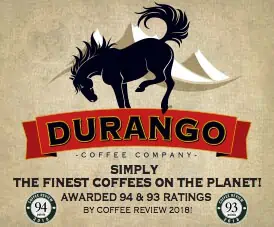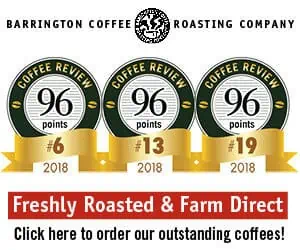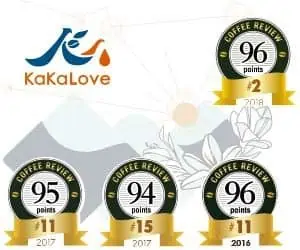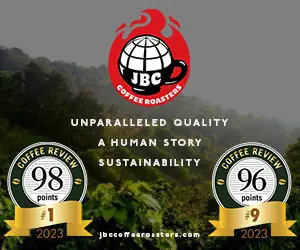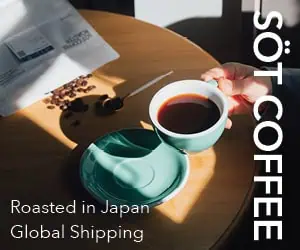It is unlikely that anyone would put Sumatra up as the finest of the world’s coffee origins, but many of us would select it as one of the most challenging and interesting.
That challenge and interest is situated right in the cup, by the way. You don’t need to
glamorize traditional Sumatras with false travelogue romance. Not only does every lot of traditionally processed Sumatra taste different from every other lot, but a good Sumatra also seems to morph (to use my co-cupper Lindsey Bolger’s term) from the moment you first smell it to the moment you finally give up trying to define it.
Lindsey Knows Sumatras
The challenge of the traditional Sumatra cup, with its odd flavor notes and sometimes
contradictory messages, made it a natural choice for a co-cupping with Lindsey Bolger, Coffee
Manager for Green Mountain. Over her many years as cupper, Lindsey has developed an
impressive ability to describe and evaluate a broad range of cup styles, from the austere purity of
high-grown Costa Ricas to richly idiosyncratic coffees like this month’s Sumatras. Lindsey’s
range of response is not so much tolerant as multifaceted. Rather than bringing one set of criteria
for excellence to the cupping table, she brings several, but applies each with rigor and clarity.
Lindsey also has one of the most colorful and surprising sets of coffee cupping vocabulary I
know of, perfectly suited to describing the offbeat pleasures of traditional Sumatras.
Have the Real Sumatras Survived?
The question before the two-cupper jury today is: How well have traditional Sumatras survived?
Have they made it through social disorders, the lowest coffee prices in history, plus efforts to
domesticate the Sumatra cup by replacing traditional methods of fruit removal and drying with
proper, orthodox methods? (See What Makes Sumatras Taste the Way They Do?)
When we put a call out for Sumatras, would we get a lot of tame Sumatras, clean-tasting
and pleasant but rather boring, would we get some just plain bad coffees, or would we get some
of the old-time, odd but good, deep-toned, quirky Sumatras that first made the origin’s
reputation?
Sumatra Success
I am relieved to report that there appear to be plenty of the fine old style of Sumatras out there.
In fact, to my palate this set of Sumatras filled out expectations for the origin far more
impressively than many of the sets of coffees we have reviewed over the past year fulfilled
expectations for their respective origins. In other words, I felt that these were better Sumatras
than the Ethiopias or Costa Ricas we recently cupped were good Ethiopias or Costa Ricas.
I suspect that there are two reasons for the success of this set of coffees. First, we may
have gotten lucky and hit a good year for traditional Sumatras. Second, Sumatras may preserve
their character better in a dark-roast style than do many other origins, and dark roasting appears
to be the style of the day in specialty coffee.
Organically Grown Sumatra Success
An interesting side note here is the success of the organically grown Sumatras in the cupping,
including some that were also certified as Fair Trade, meaning farmers were paid a sustainable,
formula-defined price for their coffees. Although some of these coffees tended to display shadow
“defects” like fermented or musty tones, these characteristics were, at least to my palate (and,
apparently, to Lindsey’s), the good kinds of ferment and mustiness, the kind that under the
impact of the right style of roast turn into complex flavor notes that read as fruit and brandy and
chocolate, or, in Lindsey’s wonderfully personal and associative language, fresh-from-oven
brownies, sweet chocolate pudding and zatar, a spice medley from the Middle East.
Unorthodox Pleasures
True, some of the nineteen samples we cupped for this review were not entirely pleasurable.
Either the flavor baggage tasted more like salty soap or compost than brandied fruit or chocolate
pudding, or the coffee was simply burned in the roaster.
But the ten coffees reviewed here are all worthy choices for the coffee adventurer–
varied, intriguing and defiantly unorthodox in their pleasures.

